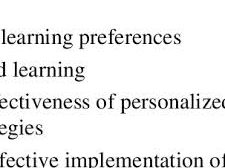In our fast-paced world, quality sleep is often overlooked, yet it’s vital for our overall well-being. If you’ve been experiencing persistent sleep problems, a sleep study might be the key to unlocking better rest. In this blog, we’ll explore what a Sleep Study involves, why it might be necessary, and what you can expect from the process.
What is a Sleep Study?
A sleep study, also known as polysomnography, is a comprehensive test used to diagnose sleep disorders. It monitors various physiological functions during sleep, such as brain activity, eye movements, heart rate, and breathing patterns. By analyzing this data, healthcare professionals can identify issues like sleep apnea, insomnia, restless leg syndrome, and other sleep-related conditions.
Why Might You Need a Sleep Study?
There are several signs that may indicate you need a sleep study, including:
- Excessive Daytime Sleepiness: If you find yourself excessively sleepy during the day despite getting a full night’s sleep, it might be a sign of a sleep disorder.
- Loud Snoring: Chronic, loud snoring could indicate obstructive sleep apnea, a condition where your breathing repeatedly stops and starts during sleep.
- Insomnia: Difficulty falling asleep or staying asleep can be symptoms of various sleep disorders.
- Restless Legs: If you experience uncomfortable sensations in your legs or an irresistible urge to move them, a sleep study might help diagnose restless leg syndrome.
What to Expect During a Sleep Study
A sleep study can be conducted either at a sleep clinic or at home, depending on your condition and doctor’s recommendations. Here’s what you can expect:
- Preparation: Before the study, you’ll receive instructions on how to prepare. This may include avoiding caffeine and alcohol on the night before the test.
- At the Sleep Clinic: When you arrive at the sleep clinic, a technician will place sensors on your scalp, face, chest, and legs. These sensors monitor brain waves, heart rate, muscle activity, and breathing patterns. You’ll then be asked to sleep in a comfortable bed while the technician observes from a nearby room.
- Home Sleep Study: If your doctor recommends a home sleep study, you’ll receive equipment to use at home. This typically includes a small monitor to wear on your wrist and sensors to place on your body. The data collected will be sent to your doctor for analysis.
- Analysis and Results: After the study, your data will be reviewed by a sleep specialist. They will analyze your sleep patterns and identify any abnormalities. You’ll then discuss the results and potential treatment options with your healthcare provider.
Follow-Up and Treatment
Based on the results of your sleep study, your doctor will recommend a treatment plan. This could involve lifestyle changes, medication, or the use of devices like a CPAP machine for sleep apnea. It’s essential to follow your doctor’s advice to improve your sleep quality and overall health.



